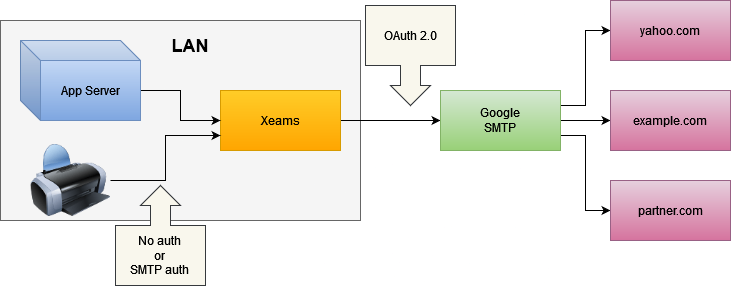Microsoft to End Basic SMTP Auth in 2025 - An Alternative
Introduction
Microsoft has announced the permanent deprecation of Basic Authentication for SMTP Client Submission (SMTP AUTH) in Exchange Online, with the process starting March 1, 2026, and reaching full rejection by April 30, 2026, delayed from the previously set September 2025 date. This change mandates a shift to Modern Authentication (OAuth 2.0) for applications and devices sending emails via SMTP, as Basic Authentication, which relies on unencrypted username and password credentials, poses significant security risks like credential theft and brute-force attacks. While this move enhances email security, it presents several challenges for organizations, particularly those reliant on legacy systems or devices. This article examines these challenges and provides actionable solutions to facilitate a seamless transition.
Challenges Companies Will Face
1. Legacy Systems and Devices Incompatibility
Many organizations use older applications or devices, such as multifunction printers (MFPs), scanners, or legacy ERP systems, that rely on SMTP AUTH with Basic Authentication to send emails. These systems often lack support for OAuth 2.0, and upgrading or replacing them can be costly and time-consuming. Many organizations may struggle to replace or upgrade these systems before the deadline.
2. Complexity of OAuth Implementation
Transitioning to OAuth 2.0 requires technical expertise to configure applications and devices to use secure tokens instead of simple username-password combinations. This process involves setting up application permissions in Microsoft?s Azure Active Directory, which can be daunting for organizations without dedicated IT staff.
Xeams - A Quick, Easy, and Cost-Effective Solution
Xeams, an on-premises email server, offers a powerful solution to bridge the gap for legacy devices and applications that do not support OAuth 2.0. Organizations can configure their devices, such as multifunction printers or application servers, to send emails to Xeams using Basic Authentication or no authentication if within a trusted network. Xeams then uses OAuth 2.0 to authenticate and deliver these messages to Microsoft Exchange Online, ensuring compliance with Microsoft's requirements.
Follow the steps below to implement this solution:
- Install Xeams: Download and install Xeams on a computer or virtual machine within the same LAN as the application or device, or on a cloud platform like AWS or Azure.
- Configure Devices: Set the SMTP server settings on devices or applications to point to Xeams' local IP address or hostname. If authentication is needed, create users in Xeams or allow specific IP addresses to relay without authentication.
- Set Up Smart Host: Configure Xeams' Smart Host (under Server Configuration) to route messages through Exchange Online using OAuth 2.0 credentials. This ensures secure delivery to Microsoft?s servers. Alternatively, you can configure SPF and DKIM in Xeams to delivery emails directly to the recipient's SMTP server.
- Test and Verify: Send test emails from devices to confirm they reach recipients via Exchange Online. Xeams' built-in troubleshooting tools and logs can help resolve any issues. This approach requires no programming changes to legacy applications, making it a cost-effective and immediate solution, particularly for organizations with dynamic IP addresses or blocked outbound port 25.
How It Works
The following diagram shows the flow.

Act Proactively
To avoid disruptions, start planning now rather than waiting for Microsoft's August 2025 reminder. Assign IT staff to monitor Message Center alerts and test OAuth. Install Xeams in a test environment to see how it works. Reach out to Synametrics' Support Department via email or phone if you have questions.Conclusion
Microsoft's deprecation of Basic Authentication for SMTP AUTH is a necessary step to enhance email security, but it poses significant challenges for organizations reliant on legacy systems, complex workflows, and limited resources. By proactively assessing SMTP usage, transitioning to OAuth where possible, and leveraging solutions like Xeams to bridge legacy systems companies can mitigate disruptions and ensure compliance by April 2026. Xeams, provides a seamless and cost-effective way to maintain email functionality for devices and applications that cannot support OAuth, acting as a critical intermediary to Microsoft's secure servers.
For further guidance, refer to Microsoft's official announcement and Xeams' documentation at https://www.xeams.com.
